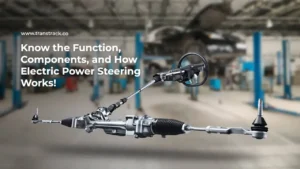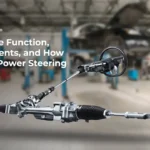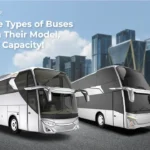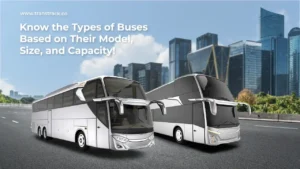Know 7 Types of 360 Camera and How They Work!
Posted on July 25, 2024 by Nur Wachda Mihmidati

In a rapidly evolving world, technology is key to improving efficiency and safety in various sectors. One innovation that is gaining popularity is 360-degree cameras. From traffic surveillance to commercial vehicle fleet management, 360-degree cameras offer a comprehensive and effective solution. With the ability to capture images from any angle with no blind spots, this technology brings significant benefits to its use in various fields. Let’s explore in more depth through this TransTRACK article how 360-degree cameras work, the types available, and the benefits they offer.
What are the different types of 360 cameras?
360-degree cameras have come a long way in recent years and come in different types designed for different needs. Here are some of the main types of 360 cameras:
Consumer 360 Degree Cameras
Designed for everyday use by general consumers. It is usually easy to use and has basic features for capturing 360-degree images and videos.
Examples: Ricoh Theta, Samsung Gear 360, Insta360 One X.
Professional 360 Degree Cameras
Aimed at professionals who require very high image and video quality. Usually equipped with more advanced sensors and lenses.
Example: GoPro Max, Insta360 Pro 2, Kandao Obsidian.
360 Degree VR Camera
Specially designed for Virtual Reality (VR) content creation. They have the ability to capture 360-degree videos that can be used in VR applications.
Example: Nokia OZO, Vuze XR, Insta360 Titan.
360 Degree Action Camera
Designed for recording in extreme conditions, such as adventure sports. They are usually waterproof and shockproof.
Example: GoPro Fusion, Garmin VIRB 360, Insta360 One R.
360 Degree Camera for Security
Used in security and surveillance systems to provide wide area coverage with no blind spots.
Example: Hikvision DS-2CD63C2F-I(V)(S), Axis M3057-PLVE, Samsung Techwin SNF-8010.
360 Degree Camera for Live Streaming
Designed for live streaming events or activities in 360-degree format. These cameras usually feature good connectivity for live streaming to platforms like YouTube or Facebook.
Example: Ricoh Theta V, Insta360 One X2, Z Cam S1.
360 Degree Car Camera
Used in car surveillance and parking systems to provide a 360-degree view around the vehicle. TransTRACK also has 360 cameras for vehicles with a primary focus on improving safety, surveillance, and fleet management. These cameras typically have the ability to provide a 360-degree view of the vehicle’s exterior, assisting drivers in maneuvering and parking safely, as well as providing visual evidence in the case of an accident.
Example: Aftermarket 360-degree parking cameras that can be installed on cars, such as products from companies like Gazer or Waylens Secure360, as well as TransTRACK’s 360 Camera.
Each type of 360 camera has features and specifications tailored to the needs of different users.
What are the benefits of using 360 cameras?
Using 360-degree cameras has various benefits, especially in the context of commercial vehicles, surveillance, and fleet management. Here are some of the key benefits:
Eliminates Blind Spots
The 360 camera provides a comprehensive view around the vehicle, eliminating blind spots and helping drivers see objects or pedestrians around the vehicle.
Improves Driver and Passenger Safety
With 360-degree coverage, these cameras help prevent accidents by providing a comprehensive view of the vehicle’s surroundings, especially when maneuvering or parking.
Improves Vehicle Security
360 cameras can monitor activity in and around the vehicle, helping to prevent theft, vandalism, and other criminal acts.
Visual Evidence Recording
In the event of an accident or incident, footage from 360 cameras can be used as evidence for insurance claims, investigations, or legal proceedings.
Improve Operational Efficiency
With real-time monitoring and recording, fleet managers can oversee vehicle operations, ensure drivers are adhering to safety procedures, and identify areas for efficiency improvement.
Supporting Drivers in Maneuvering
The 360 camera assists drivers when parking and maneuvering in tight spaces, reducing the risk of collisions and vehicle damage.
Remote Monitoring
Integration with fleet management systems allows remote monitoring of vehicle conditions and their environment, giving fleet managers the ability to oversee operations in real-time.
Reduced Insurance Costs
Installing 360 cameras can reduce insurance premiums as it improves safety and provides visual evidence that can be used for claims.
Driver Training and Evaluation
Footage from 360 cameras can be used to train new drivers and evaluate driver performance, assisting in safety and efficiency improvement programs.
Improving Passenger Experience
In public transportation, 360 cameras can increase the sense of security for passengers with better surveillance.
360 cameras from TransTRACK offer these benefits by providing a reliable and integrated solution for a variety of vehicle surveillance and management needs.
How does a 360 camera work?
A 360 camera works by using multiple lenses to capture images from all directions, which are then combined into a single panoramic image or video. Here is a more detailed explanation of how it works:
Multiple Lenses
360 cameras are generally equipped with two or more wide-angle (usually fisheye) lenses positioned such that each lens captures a different part of the surrounding environment. Some cameras even have four or six lenses for wider coverage.
Capture
Each lens captures an image or video simultaneously. The images captured by each lens cover a certain part of the field of view, which will then be combined to form a 360-degree image.
Stitching
The process of combining images from multiple lenses is called stitching. Specialized software inside the camera or on external processing software combines these images seamlessly into a single panoramic image or video. The stitching algorithm ensures that the transition between images from different lenses is smooth and natural.
Real-time Processing
Some 360 cameras have the ability to perform real-time stitching, allowing users to view 360-degree results directly on a screen or connected device.
Output
Once a 360-degree image or video is formed, the output can be viewed on devices that support 360-degree viewing, such as VR headsets, computers, or smartphones. Some online platforms such as YouTube and Facebook also support 360-degree content, allowing users to interact with the content by panning or moving their device.
Additional Features
Modern 360 cameras are often equipped with additional features such as image stabilization, HDR (High Dynamic Range), and the ability to capture videos in high resolution (4K or higher). Some cameras also support live streaming, allowing users to broadcast 360-degree videos live to online platforms.
Integration with Other Systems
In the context of commercial vehicles and fleet management, 360 cameras can be integrated with fleet management systems and ADAS (Advanced Driver Assistance Systems). The data captured by the camera can be sent to the control center for real-time monitoring and further analysis.
Simple Diagram of 360 Camera Working Process:
- Image Capture:
- Lens A -> Image A
- Lens B -> Image B
- Lens C -> Image C
- (and so on…)
- Stitching Process:
- Image A + Image B + Image C -> 360 degree image
- Output and Display:
- 360-degree image -> Display Device (VR Headset, Computer, Smartphone)
360 cameras from TransTRACK will use this technology to provide a comprehensive view around the vehicle, improving safety, security, and operational efficiency of fleets.
360-degree cameras offer tremendous benefits in improving safety, security, and operational efficiency, especially in the context of commercial vehicle and fleet management. With the ability to provide an all-round view with no blind spots, assist in safe maneuvering, and provide valuable visual evidence, this technology is becoming a very important investment for transportation and logistics companies.
Are you ready to optimize your fleet operations and improve safety with advanced solutions? Start using TransTRACK’s 360 Camera. Get a comprehensive view around your vehicles, monitor activities in real-time, and ensure better safety and efficiency. Contact us today for more information and start the journey towards superior, high-tech fleet management!
Recent Post
Know the Function, Components, and How Electric Power Steering Works!
December 24, 2025Know the Types of Buses Based on Their Model, Size, and Capacity!
December 22, 2025Topic :
vehicle safetyvehicle technology
Recommended Articles

 Bahasa Indonesia
Bahasa Indonesia








